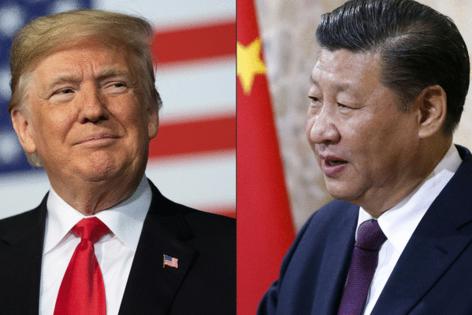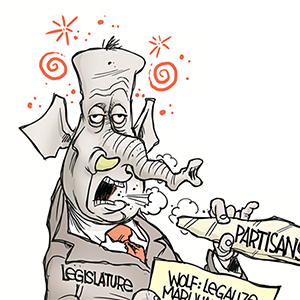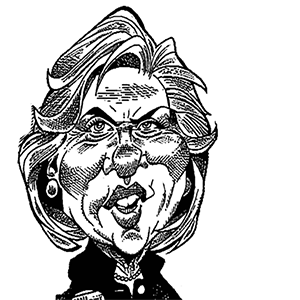Xi's Olive Branch to Trump Comes With Warning on China Red Lines
Published in Political News
Xi Jinping used his final meeting with Joe Biden to send a clear message to Donald Trump: China wants to be friends, but is ready for a fight if necessary.
With Biden set to leave the White House in January, China’s leader took Saturday’s meeting as a chance to spell out his approach toward Trump. That entails finding a way for the world’s two biggest economies to get along, with Xi emphasizing that the U.S. and China shouldn’t fight a “new Cold War,” and a conflict between them isn’t inevitable.
But he followed that up by reiterating China’s “four red lines,” signaling that Trump must avoid any moves to undermine the Communist Party’s grip on power, push the nation toward democracy, contain its economic rise or encourage independence in Taiwan. Chinese state media including CCTV seized on the reference to “four red lines,” saying it set the agenda for the future relationship.
“They must not be challenged,” Xi said in a statement after the meeting with Biden in Lima, Peru, where both leaders attended the APEC summit. “These are the most important guardrails and safety nets for China-U.S. relations.”
The lengthy statement from Xi after what was essentially a farewell chat with an outgoing U.S. president shows that China is hoping for the best while preparing for the worst. Trump has threatened to hit Beijing with tariffs of 60%, and tapped several hardliners on China to lead his foreign policy team, including Marco Rubio as secretary of state and Mike Waltz as national security advisor — suggesting no sensitive areas are off limits.
At the same time, Trump has raised questions about just how much the U.S. should support Taiwan and has grown closer to Elon Musk, the chief executive officer of Tesla Inc., who has substantial business interests in China. In 2023, Musk said Taiwan is an “integral part of China,” drawing a rebuke from the island’s leaders.
It remains unclear if the tariff threat is a jumping-off point for negotiations similar to those in Trump’s first term, or if Trump has grown more ideological in seeking to thwart a top U.S. adversary. At the APEC summit, JPMorgan Chase & Co. Chief Executive Officer Jamie Dimon saw Trump’s warnings on tariffs as a way to get governments to the negotiating table and urged attendees to read the president-elect’s book The Art of the Deal.
In Peru, Xi sought to shore up ties with a range of U.S. allies and partners, and he’s set to hold talks more of them at the Group of 20 meeting starting Monday in Brazil. In a meeting with South Korean President Yoon Suk Yeol, Xi called for the nations to deepen exchanges and maintain stability, a sign of his displeasure with North Korea’s move to send troops to help Russia’s war in Ukraine.
Xi’s remarks after meeting Biden suggested China was open to talks on economic matters that didn’t touch his no-go areas — perhaps none bigger than Taiwan, the island democracy that Beijing has threatened to take by force if necessary. After the talks with Biden, Xi for the first time called out Taiwan’s leader by name, saying that the U.S. should “see clearly the true nature of Lai Ching-te” in seeking independence.
On the flashpoints in the South China Sea, Xi also warned the U.S. to stay out of its territorial disputes with the Philippines, a U.S. treaty ally, urging Biden not to aid any “impulsion for provocations” even though he didn’t name the Southeast Asian country.
Xi also criticized the US policy of a “small yard and high fence,” using a term coined by U.S. National Security Advisor Jake Sullivan to describe the U.S. efforts to ensure China can’t access cutting-edge technology.
On his warnings to avoid touching the issues of human rights and democracy, it was unclear exactly what Xi meant. But he’s long been concerned about what he sees as possible U.S. attempts to foment dissent, and growing economic distress in China risks fueling anger at his government.
China often gives vague warnings, and they don’t necessarily mean any particular action will trigger a war. In a briefing after the meeting, Sullivan said those types of statements were typical of Beijing.
“The message of ‘choose wisely, not wrongly’ is a pretty standard, fair PRC statement that they’ve made repeatedly over the course of these past four years, the four years before that, and so on,” Sullivan said. “And that’s especially been true where the relationship has taken on a more competitive dynamic.”
A White House readout of the meeting said the two leaders “stressed the importance of responsibly managing competitive aspects of the relationship” as well as preventing conflict and keeping up communication.
Whatever Xi intends, he sought to characterize the U.S. position toward China more than in the past. The Chinese readout included six “no’s,” compared with four after Xi met Biden in Bali: “The United States does not seek a new Cold War, it does not seek to change China’s system, its alliances are not targeted against China, it does not support ‘Taiwan independence,’ it does not seek conflict with China, and it does not see its Taiwan policy as a way to compete with China.”
The big question now is whether Trump and his cabinet members will agree that’s indeed the case.
©2024 Bloomberg L.P. Visit bloomberg.com. Distributed by Tribune Content Agency, LLC.




























































Comments